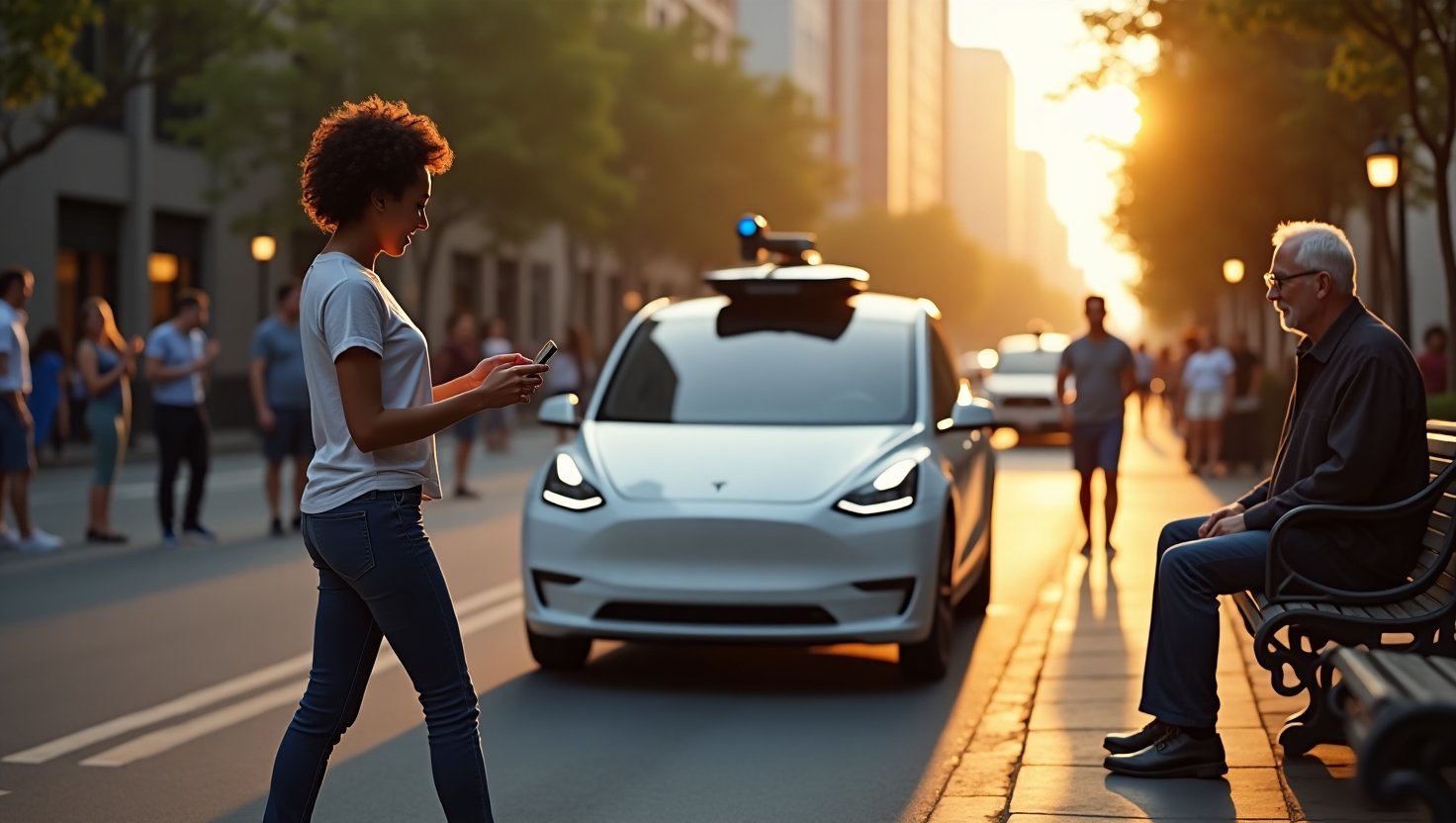Tesla Robotaxi: The Future of Autonomous Ride-Hailing
Introduction
Tesla continues to pave the way in autonomous vehicle innovation with the launch of its long-awaited robotaxi service. As a trailblazer in autonomous technology, Tesla stands at the intersection of cutting-edge advancements and the evolving transportation sector. The Tesla Robotaxi is not just another step in Tesla’s evolution; it’s a significant stride in the burgeoning domain of autonomous ride-hailing. This service represents the amalgamation of years of research, innovation, and an unyielding commitment to revolutionizing how we perceive mobility.
Autonomous vehicles are projected to redefine transportation—reducing traffic accidents, lowering emissions, and providing seamless travel experiences. Tesla’s dive into the robotaxi realm brings these benefits to the forefront while underscoring Elon Musk’s vision to dominate the driverless technology space.
Background
Tesla’s quest for autonomous superiority is not a recent endeavor. Since its inception, Tesla has been synonymous with innovation. The company’s roots in electric vehicle technology laid a robust foundation for its journey into autonomous territories. Competing with heavyweights like Waymo and Uber, Tesla has taken strides to not only keep up but often lead the industry.
Key milestones in Tesla’s autonomous journey include the development of its Autopilot and Full Self-Driving (FSD) features. The subsequent advancements in artificial intelligence, sensors, and in-car computing have set the stage for the robotaxi service. Through each step, Elon Musk has injected his vision of an autonomous future, pushing boundaries and prompting Tesla to take calculated risks that often pay off.
Current Trend in Autonomous Ride-Hailing
Driverless technology is no longer a speculative concept—it’s ever-present and rapidly shaping the market. With tech giants and automotive companies racing toward full autonomy, the market for robotaxis is on the verge of exponential growth. The allure of autonomous ride-hailing lies in its promise of safety and efficiency; however, public perception still hangs in the balance.
Studies suggest that while many consumers are excited by the technological advancements, hesitations linger concerning safety and reliability. Moreover, the competitive landscape is heating up as companies vie for a slice of the projected €450bn market by 2035, as noted by Volkswagen (source: BBC News). As technology progresses, so do regulatory frameworks and consumer confidence, which will ultimately dictate the pace at which driverless services integrate into daily life.
Insights from Recent Launch
Tesla’s robotaxi’s pilot program has officially rolled out in Austin, Texas, marking a pivotal moment in autonomous vehicle deployment. A modest fleet, overseen by human safety operators, symbolizes a cautious yet optimistic approach. While Elon Musk hails this as the \”culmination of a decade of hard work,\” industry watchers remain skeptical about its immediate success amid concerns raised by analysts and the public (source: BBC News).
Early feedback from industry stakeholders such as Paul Miller described the launch as a \”low-key affair,\” indicating that Tesla might be biding its time, refining its service before a full public rollout. Safety persists as a critical talking point—analogous to an airplane needing years of flawless test flights before commercial acceptance, robotaxis too require immaculate safety records to win over public trust.
Forecast for the Future of Robotaxi Services
The future of the autonomous taxi market is poised for dynamic growth, with projections indicating a thriving industry by 2035. Tesla’s position within this landscape, though promising, faces significant challenges. The company’s ability to navigate through intense competition from firms like Waymo and Uber, as well as evolving regulatory standards, will be crucial.
The road to ubiquitous robotaxi services is dotted with hurdles: regulatory approvals, consumer adoption, and technology refinement. However, with each technological leap, Tesla edges closer to its vision, shaping the transport sector’s future. Industry experts predict that integrating advanced AI and optimizing machine learning algorithms will play a pivotal role in overcoming these obstacles.
Call to Action
For those closely following the transportation revolution, staying informed about developments like Tesla’s robotaxi service is vital. Autonomous vehicles are reconfiguring the landscape of transit and mobility. Share your thoughts—how do you perceive the safety and efficiency of autonomous vehicles? To delve deeper, explore more about the intricacies of driverless technology and ride-hailing trends through the resources provided.
Related Articles: Tesla’s robotaxi service launch
As the world inches closer to a driverless future, staying abreast of technological advancements and industry shifts is imperative. The road might be long, but its impact will ripple through decades to come.

